Related Research Articles

Macroglossum trochilus, the African hummingbird hawk-moth, is a moth of the family Sphingidae. The species was first described by Jacob Hübner in 1823. It is very common in most habitats throughout southern and eastern Africa and in the Comoro Islands.
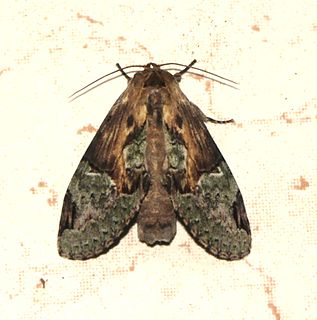
Chadisra bipars is a moth of the family Notodontidae. It was described by Francis Walker in 1862 and is found in the Indomalayan realm.

Hypaedalea butleri is a moth of the family Sphingidae. It is known from forests from Sierra Leone to Congo and Uganda.
Hayesiana farintaenia is a moth of the family Sphingidae. It is known from eastern China. This species was known for many years by an unpublished manuscript name "Schausanus barnesi", with two specimens in the Carnegie Museum of Natural History. This name has been superseded by the newly published name Hayesiana farintaenia.
Hellinsia corvus is a moth of the family Pterophoridae first described by William Barnes and Arthur Ward Lindsey in 1921. It is found in California, Colorado, Alberta and British Columbia.

Podomachla chromis is a moth in the family Erebidae first described by Herbert Druce in 1882. It is found in Cameroon, the Democratic Republic of the Congo and Equatorial Guinea.
Acrolophus whitelyi is a moth of the family Acrolophidae first described by Hamilton Herbert Druce in 1901. It is found in Guyana.
Cyclosia panthona is a moth in the family Zygaenidae. It was described by Caspar Stoll in 1780. It is found in China, Hong Kong, India, Sri Lanka, and Myanmar.
Episcepsis demonis is a moth of the family Erebidae. It was described by Herbert Druce in 1896. It is found in Panama and Peru.
Eilema punctifera is a moth of the subfamily Arctiinae first described by George Hampson in 1893. It is found in Sri Lanka.

Lophocampa amaxiaeformis is a moth of the family Erebidae. It was described by Walter Rothschild in 1910. It is found in Panama and Ecuador.

Lophocampa endolobata is a moth of the family Erebidae. It was described by George Hampson in 1901. It is found in Brazil.
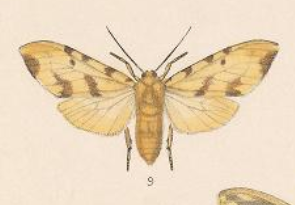
Lophocampa labaca is a moth of the family Erebidae. It was described by Herbert Druce in 1890. It is found in Jalisco, Mexico.
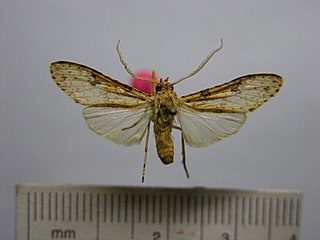
Lophocampa laroipa is a moth of the family Erebidae. It was described by Herbert Druce in 1893. It is found in Costa Rica, Guatemala, Ecuador and Brazil.

Spilosoma crossi is a moth in the family Erebidae. It was described by Rothschild in 1910. It is found in Nigeria and Gambia.
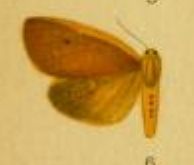
Spilosoma gynephaea is a moth in the family Erebidae. It was described by George Hampson in 1901. It is found in South Africa and Zimbabwe.
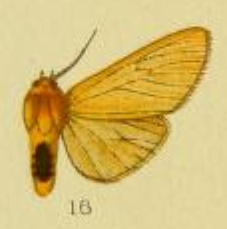
Spilosoma pales is a moth in the family Erebidae. It was described by Herbert Druce in 1910. It is found in Kenya, Tanzania and Uganda.

Crameria is a monotypic moth genus in the family Noctuidae erected by Jacob Hübner in 1819. Its only species, Crameria amabilis, was first described by Dru Drury in 1773.
Pedoptila thaletes is a moth in the family Himantopteridae. It was described by Herbert Druce in 1907. It is found in the Republic of the Congo and Cameroon.

Semioptila flavidiscata is a moth in the Himantopteridae family. It was described by George Hampson in 1910. It is found in South Africa, Zambia and Zimbabwe.
References
- ↑ Beccaloni, G.; Scoble, M.; Kitching, I.; Simonsen, T.; Robinson, G.; Pitkin, B.; Hine, A.; Lyal, C., eds. (2003). "Vianga tristis". The Global Lepidoptera Names Index . Natural History Museum . Retrieved May 25, 2018.
- ↑ Afro Moths
- ↑ Druce, H. 1896. Descriptions of some new species of Heterocera from tropical Africa. - Annals and Magazine of Natural History (6)17(101): 355
| This article relating to the superfamily Bombycoidea is a stub. You can help Wikipedia by expanding it. |